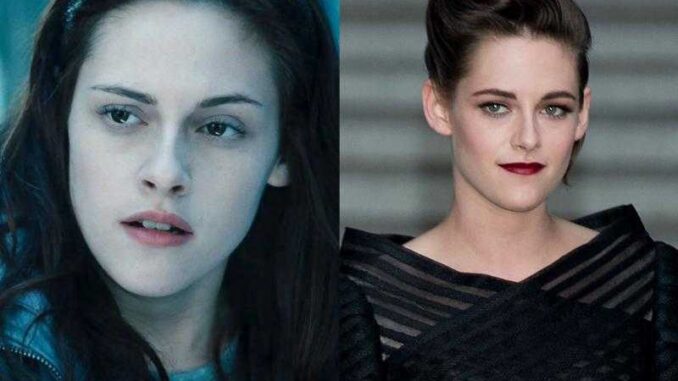
The Glimmering Cage: Bella Swan and the Mortality of Identity
Bella Swan, the perpetually awkward, often clumsy, and arguably codependent protagonist of the Twilight saga, poses a deceptively complex question. Is she “better” as a mortal girl, perpetually yearning for the shimmering allure of the immortal, or as a vampire, finally embodying the power and grace she so desperately craved? The answer, however, lies not in a simple judgment of her transformation, but in understanding the underlying struggle of identity that permeates her entire arc, a struggle intricately bound to her mortality and the distorted romantic ideal she pursues.
As a mortal, Bella is defined by her supposed normalcy. She is the “everygirl,” a plain, unremarkable creature adrift in the extraordinary world of Forks, Washington. This ordinariness, however, is precisely what fuels her discontent. She feels fundamentally incomplete, an outsider looking in, lacking the vibrancy and purpose she perceives in the vampires and werewolves that populate her life. This inherent dissatisfaction is further exacerbated by her relationship with Edward Cullen. He is not just her boyfriend; he is the embodiment of everything she lacks: beauty, control, and an immortal existence free from the constraints of time and consequence.
Bella’s mortal identity is, therefore, a patchwork of longing and self-deprecation. She clings to her imperfections, almost celebrating them as a testament to her humanity, while simultaneously yearning for the transcendent perfection of vampirism. She constantly compares herself to Edward and his family, highlighting her perceived flaws and reinforcing the notion that she is somehow “less than.” This internal conflict manifests in her self-sacrificing tendencies, her willingness to risk her life for those she loves, and her persistent desire to shed her mortal coil and embrace the unknown.
One might argue that her humanity provides her with empathy, vulnerability, and a connection to the mortal world that the vampires have lost. She is a bridge between two worlds, a vessel for compassion and understanding. However, this connection is often portrayed as a burden, a weakness that prevents her from achieving true happiness. She fears aging, mortality, and the inevitable decay that comes with human existence. This fear is not necessarily a universal truth; it is a manifestation of her specific longing, fueled by the seductive allure of eternal youth and beauty.
The transformation into a vampire offers Bella a seemingly perfect solution. She gains the physical prowess, supernatural abilities, and ageless beauty she so craved. She is finally “complete,” no longer a fragile, mortal girl but a powerful predator. Yet, this transformation comes at a cost. The loss of her humanity, though perhaps initially celebrated, is a severance from the connections and experiences that defined her mortal life. While she retains her memories and personality, they are now filtered through the lens of her vampiric existence. She is forever separated from the normal human experiences she once took for granted: growing old, having children naturally, and experiencing the full spectrum of mortal emotions.
Furthermore, the very qualities that drew her to vampirism in the first place – the beauty, control, and agelessness – become a cage. She is trapped in a perpetual state of perfection, her individuality potentially subsumed by the rigid rules and expectations of the vampire world. The shimmering, alluring promise of immortality becomes a gilded prison, trapping her in a static existence devoid of the inherent beauty of change and growth that she once experienced as a mortal.
Ultimately, whether Bella is “better” as a vampire is a subjective question that depends on individual values and perspectives. However, focusing solely on the outcome of her transformation overlooks the deeper, more compelling narrative of identity struggle that drives her story. Bella’s journey, whether mortal or immortal, is a testament to the complexities of self-discovery, the allure of unattainable ideals, and the inherent tension between embracing one’s limitations and striving for something more. Her transformation, while offering her the superficial fulfillment of her desires, also raises profound questions about the true cost of escaping the imperfections that define us and the potential for those very imperfections to be the source of our greatest strengths and most meaningful connections. In the end, Bella’s story serves as a cautionary tale about the dangers of sacrificing one’s authentic self in pursuit of a shimmering, but ultimately illusory, ideal.
